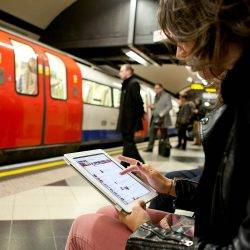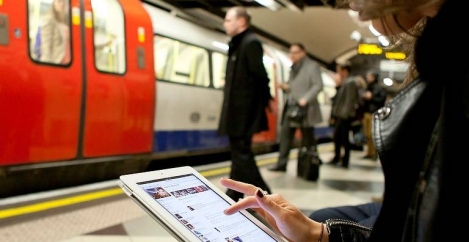August 14, 2017
Mayor announces plans to boost digital connectivity across London
 The Mayor of London, Sadiq Khan, has announced a package of measures which he claims will boost digital connectivity across the capital and tackle London’s areas of poor connectivity – known as ‘not-spots’ – including the appointment of a troubleshooting ‘Not Spot Team’. Meanwhile, Transport for London is working to bring mobile connectivity to London Underground tunnels – one of the most high-profile not spots in the country. In spite of Brexit, London is still widely regarded as Europe’s leading technology hub, with a growing sector of over 40,000 digital technology businesses employing almost 200,000 people, as well as major bases of many leading global tech companies. But while the capital leads the way in tech growth, there are parts of the city where slow and unreliable broadband is a source of concern and frustration for businesses and residents alike, such as in Rotherhithe and parts of Westminster and the City of London.
The Mayor of London, Sadiq Khan, has announced a package of measures which he claims will boost digital connectivity across the capital and tackle London’s areas of poor connectivity – known as ‘not-spots’ – including the appointment of a troubleshooting ‘Not Spot Team’. Meanwhile, Transport for London is working to bring mobile connectivity to London Underground tunnels – one of the most high-profile not spots in the country. In spite of Brexit, London is still widely regarded as Europe’s leading technology hub, with a growing sector of over 40,000 digital technology businesses employing almost 200,000 people, as well as major bases of many leading global tech companies. But while the capital leads the way in tech growth, there are parts of the city where slow and unreliable broadband is a source of concern and frustration for businesses and residents alike, such as in Rotherhithe and parts of Westminster and the City of London.
The Mayor made a manifesto commitment to help improve connectivity in London by tackling areas of poor internet provision and ensuring better access to public sector property for digital infrastructure. His new ‘Not-Spot Team’ will be going out to London’s most problematic connectivity spots, to work with local authorities and providers to identify and deliver solutions to improve connectivity.
Meanwhile, the Elizabeth Line – Crossrail – will have mobile coverage when it launches through central London in December 2018, giving continuous phone coverage and access to the Internet, apps and email as trains move through tunnels across the network. TfL will shortly be issuing a formal notice seeking feedback from the industry on how it can best take advantage of its underground and street-level assets to improve connectivity across the capital, while also generating a commercial return. WiFi is already widely available on many parts of the network through service providers such as Virgin Media (pictured).
The Mayor of London, Sadiq Khan, said: “London is now a leading global tech hub, with thriving start-ups alongside major companies like Facebook, Amazon and Google. But our digital connectivity needs to be improved – internet connectivity is now a key public utility, and it is no surprise that some businesses see poor connectivity as a barrier to growth. If we are to remain competitive in the global economy, we need to ensure every Londoner is able to access a fast and reliable digital connection. That means working to boost connectivity across London – tackling not-spots, delivering connectivity in the London Underground and working with local authorities to provide digital infrastructure fitting of a global tech hub.”
David Leam, infrastructure director at London First, said: “Business needs fast and reliable connections across our capital – in the office, for people working from home and when they’re on the move. We should be making the most of existing infrastructure, including the London Underground network, to boost speeds and deliver coverage to areas that have been left behind. But we also need London’s planners to get behind this work, otherwise our digital ambitions risk being strangled by red tape.”
The Mayor is writing to all local authorities in the capital to encourage all boroughs to bid for the Government’s Digital Infrastructure Funding and giving guidance on how best to use access arrangements, known as ‘wayleaves’, to get more fibre in the ground and into buildings. These legal agreements are used to grant access to land or buildings for providers to deploy and manage digital infrastructure. This can often be problematic and time-consuming in agreeing terms. The GLA has already supported work of the City of London Corporation to develop a standardised wayleave agreement, and now intends to work across London to develop standard mobile wayleave.














